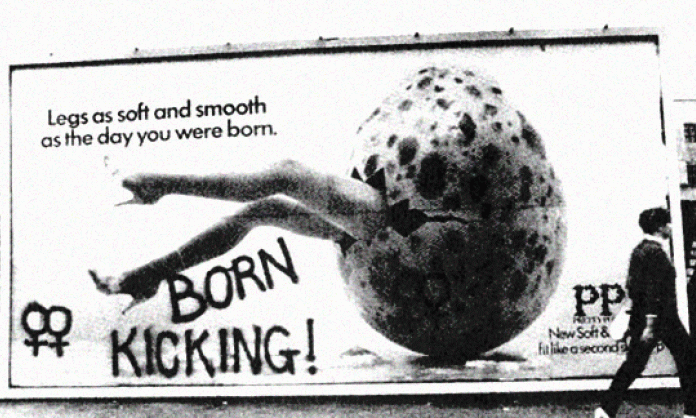When US actor Philip Seymour Hoffman died last year, there was an outpouring of gratitude for his life work; his creative talent was celebrated in thousands of obituaries. No one mentioned his physical appearance or his weight. No one discussed whether he was sexually attractive or whether he was good marriage material.
Colleen McCullough, one of the most prolific and loved Australian writers, was remembered by a journalist in the Australian last month in the following way: “Plain of feature, and certainly overweight, she was, nevertheless, a woman of wit and warmth.”
Instead of then moving on to discuss the wit and warmth of McCullough’s prose, the next sentence talks of how Colleen was – fortunately! – able to use these attributes to attract men.
When Novak Djokovic was interviewed at the Australian Open last month, he was not asked to dance around for the cameras. He was asked to analyse the game he’d just played.
When Eugenie Bouchard won a match in straight sets at the same tournament, she was asked by the post-game interviewer to “give us a twirl”.
These are just two of the most recent examples of the incredible double standards for men and women in our society.
And it’s not just in pop culture. Every woman has a thousand or more examples from her own life of being judged by her appearance, of being leered at or groped by a creepy boss or of having her opinions credited to the man standing next to her.
The idea that women are inferior in almost every pursuit – except those that bring out their sexy side or their mothering side – is pervasive.
But sexism is more than a mild irritation that follows women through life. It is responsible for real and painful degradation and inequality in every sphere, from personal life to the workplace.
Sexism sells
Underpinning the sexist stereotypes and behaviours that pervade society are structural forms of sexism that are powerfully entrenched and that provide enormous benefit to those at the top of the pecking order.
For example, CEOs and business heads everywhere have a very calculated approach to sexism: they use it to maximise their profits. This is most obviously the case for industries like pornography and cosmetics.
It is also used much more broadly. There are at least a dozen hackneyed sexist memes that are recycled throughout the advertising industry to sell pretty much any product: the woman looking as if she is having sex with some type of food product; the woman who is plugged into an appliance; the woman who will have sex with you when you buy this car, vodka, deodorant, soft drink; the woman who will stop her nagging only when you purchase the right cleaning product, car, life insurance package.
The gender pay gap
According to the latest Australian Bureau of Statistics data, women’s wages are, on average, 18.2 percent lower than men’s. This is the widest that the gender pay gap has been since the ABS began collecting statistics on it in 1994.
Since women make up just under 50 percent of the paid workforce in Australia (and more than 50 percent worldwide), the gender pay gap is an enormous economic bounty for the bosses. And though the majority of bosses are men, women bosses are equally the beneficiaries.
Gail Kelly, the recently retired CEO of Westpac, is a case in point. She is widely lauded by the establishment as a shining role model for women, as someone who “smashed the glass ceiling”. She may well be a staunch advocate for women in boardrooms, but she is the enemy of the majority of women, not least the women workers at Westpac, who labour in an industry with the highest gender pay gap in Australia (27 percent).
The family
Sexism is structurally enforced in our so-called “private lives”. The main way this occurs is through the family.
The family trains people in many of the attitudes and stereotypes that dominate the media and advertising industry. It stamps out gender “transgression”, teaching girls and boys to play, act and speak according to the rules of their gender – sometimes with gentle ideological nudging, sometimes with outright physical abuse.
And though many of us no longer live in family structures that resemble Nora’s dollhouse, this is still the standard to which we are expected to strive. Tony Abbott and many other spokespeople for his class take it upon themselves to remind everyone of the importance of “family values” on a gratingly regular basis.
And it’s no wonder. Sexism, homophobia and transphobia are classic weapons of social control and divide and rule.
But the family, like the gender pay gap and the commodification of women’s bodies, is not just an ideological weapon; it is economically beneficial to the capitalist class. It takes private responsibility for child care, care of the elderly, basic medical care, nurturing and comforting people and many other things. Women perform the bulk of these tasks.
Despite the fact that a majority of people do not live in the traditional nuclear family today, the economic burdens associated with the privatised, self-sufficient family unit remain the same. LGBTI parents and single mothers are expected to pay all of the same costs as heterosexual couples.
These economic burdens for the working class represent the opposite for the ruling class. If they couldn’t rely on the family, they would have to inject millions into hospitals, child care and other services just to keep the working class alive and working.
Is there a way out?
Sexism affects women in every area of their lives because there are many institutions in society which actively benefit from and promote women’s oppression.
Understanding the inbuilt nature of oppression has implications for how to fight it. We should take up every manifestation of sexism in our lives and in broader society. But to challenge women’s oppression fundamentally, we need to take on the underlying system of economic inequality and social repression.











